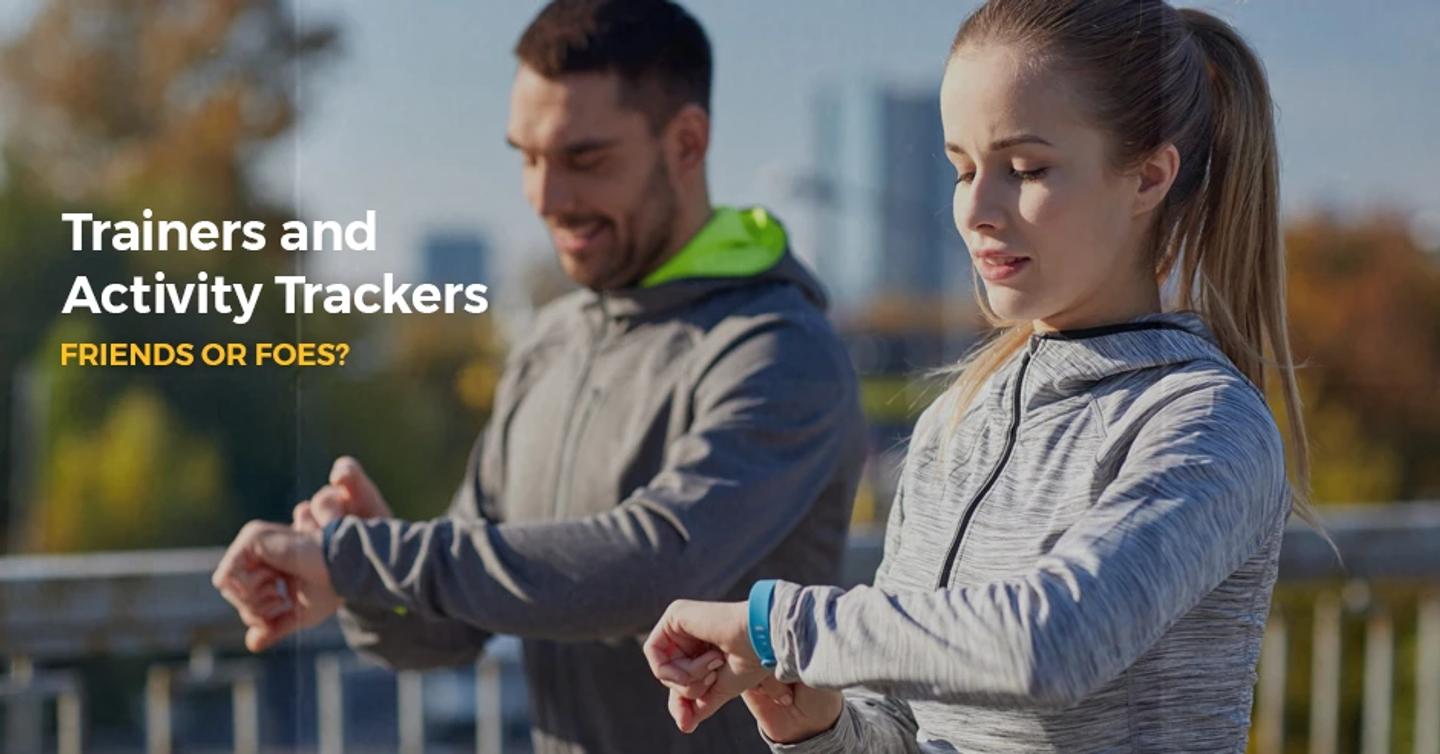
Trainers and Activity Trackers: Friends or Foes?
Reading Time: 3 minutes 36 seconds
BY: ISSA
DATE: 2019-05-08
The increased use and reliance on technology has been making its way into the gym. It also has added another layer to the lines of communication in the form of wearable activity trackers. Featuring apps for such things as measuring expended calories and heart rate, wearable trackers, typically worn on the wrist or strapped across the chest, still represent one of the hottest trends in the fitness industry.
While some have come to view a wearable activity tracker as a must-have when working out, these devices aren't for everyone, and they certainly aren't vital to producing an effective workout. But personal trainers should welcome a client's decision to wear one and be willing to take advantage of the technological support they provide.
Making an Alliance with Activity Trackers
First, some ground rules are in order. One of the keys for personal trainers successfully developing strong working relationships with clients involves making sure the lines of communication remain open. In the most basic sense, your clients reveal their goals and you provide the knowledge and direction to help your clients meet those goals.
Both you and your client should view activity trackers as an aid in meeting the goals of their workout. They are not a substitute for your scientific knowledge and physical commitment, which are the backbone of training and exercise. And activity trackers don't provide a shortcut or represent a new found secret to success. However, wearables certainly can have their place in the gym and serve as a useful addition to the training you provide as a fitness professional.
Wearables Aiding a Workout
Because of the wide range of products available, clients can choose the type of activity tracker that best suits their ability to meet their goals. Heart rate, activity levels, sleep quantity and quality, and calories consumed and burned are among the trackable data provided by popular wearable devices.
Personal trainers have monitored all those things for years. What makes the devices popular with some is that they offer convenience, and, in some cases, more immediate access to the data.
Suppose your client is running through cardiovascular training on a day they're not at the gym with you. If the client is wearing a heart rate monitor, it makes it easier for them to see if they're maintaining that 60 to 80 percent of capacity for a prescribed time. It helps your client maximize the effects of the workout and, more long term, the training plan you set for them.
However, before using the data to enhance a workout, ensure your clients enter accurate personal information to receive accurate feedback. Take the time to enter some of this information with your client, such as inputting their current weight and fitness goals. With that stipulation in place, a wearable device can be a true asset.
Promoting Overall Health with Fitness Trackers
A tracking device also can aid in motivating clients for their overall health and fitness. To that end, trainers should encourage clients to share their data with them. Clients will be more apt to stick to the plan if they know you, their trainer, is monitoring the numbers. But there's more to it than basic accountability.
Tracking Goals
Personal trainers can use wearable devices to help clients track realistic, measurable goals. For example, you can assign a client to hit 10,000 steps four days a week for two weeks. Set up the goal in their activity tracker and then also set up reminders that will encourage your client to stay active even on days when they don't have a session with you. Setting up these smaller goals that clients can track on their own will empower them to stick to the training plan.
Adjusting Workouts
Trainers can then use the data in consultations to help clients adjust their workouts when necessary. If you're working with a client trying to lose weight, you can monitor their caloric intake and expenditure. Then, if results are slow to materialize, you can review their data to assess opportunity for improvement.
Monitoring Sleep
Getting enough rest is important to one's fitness success. The use of an activity tracker that monitors sleep can prove highly beneficial when it comes to maximizing workouts. Not only can such use promote good sleep habits for your clients, but it also can help identify periods of low-quality sleep that may indicate the need for more recovery time. After seeing a client's pattern of poor sleep, perhaps you move a scheduled day of heavy lifting and replace it with a lighter, bodyweight-focused session.
Making the Most of Activity Trackers
With so much information available at the touch of a few buttons, it's no surprise that wearables have had a major impact on the fitness industry. And why you should embrace your client's desire to use one. Every client is different, so try to be flexible with the tools you use to support their goals.
Not yet a trainer but interesting in helping others improve their health and fitness? Check out the ISSA's online course for becoming a certified personal trainer. Learn more about the body and how you can maximize its performance through exercise and nutrition.